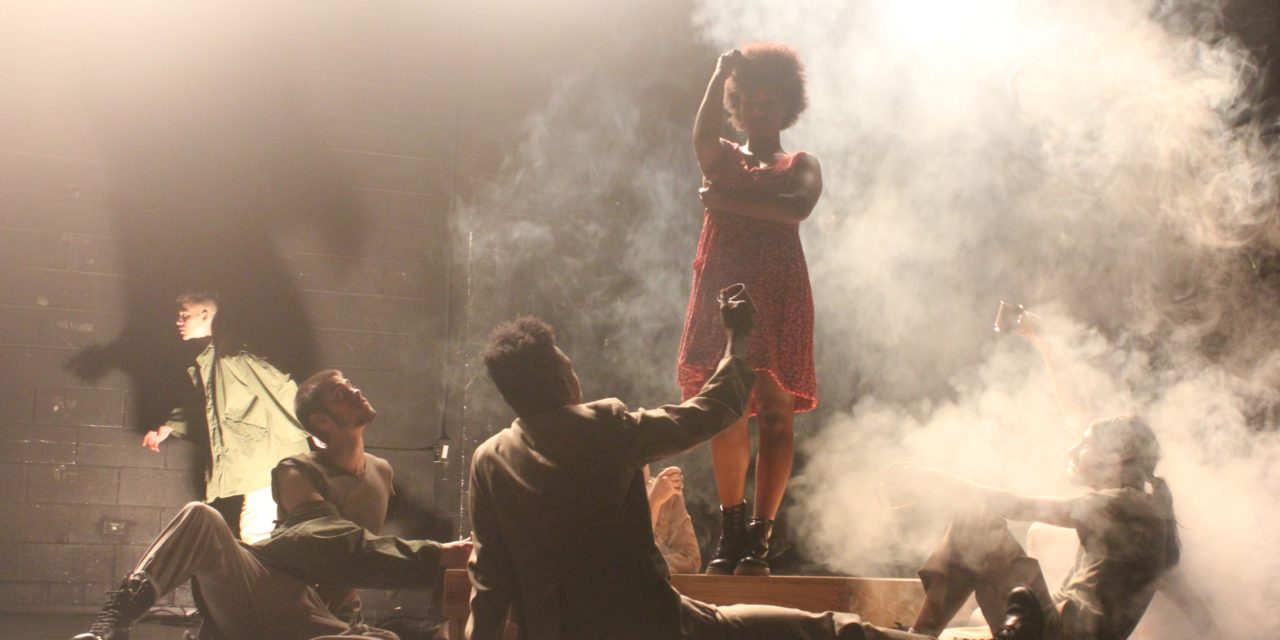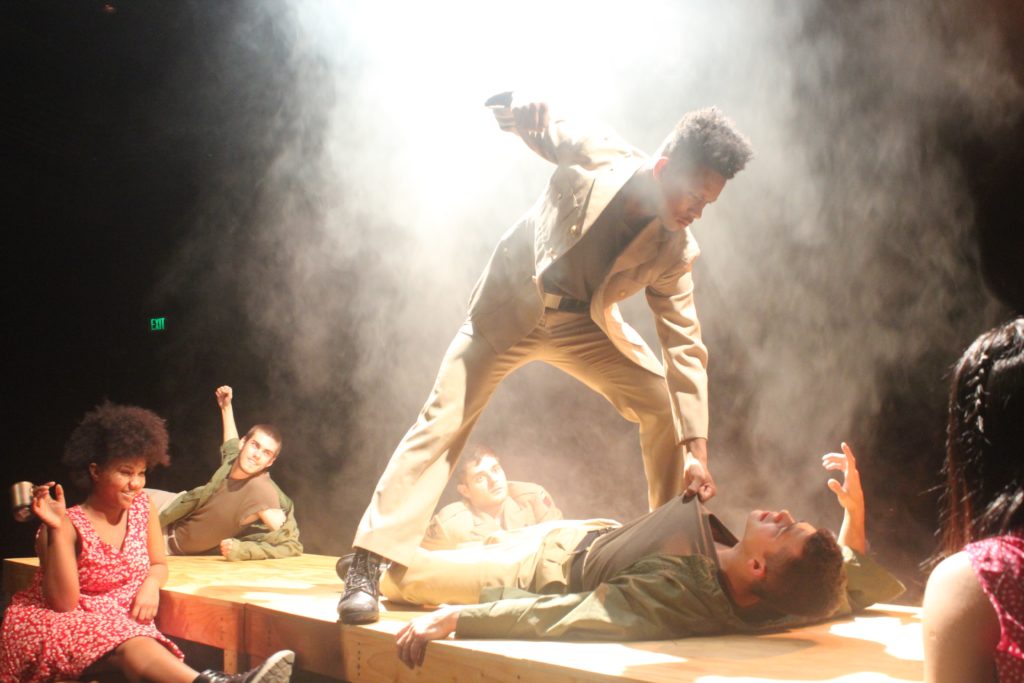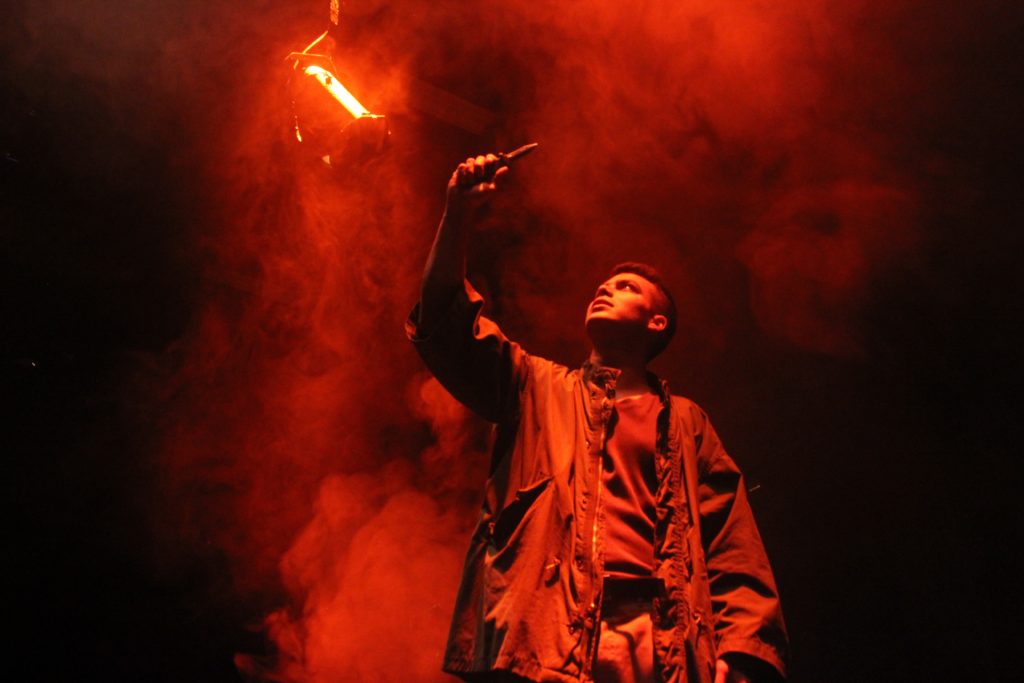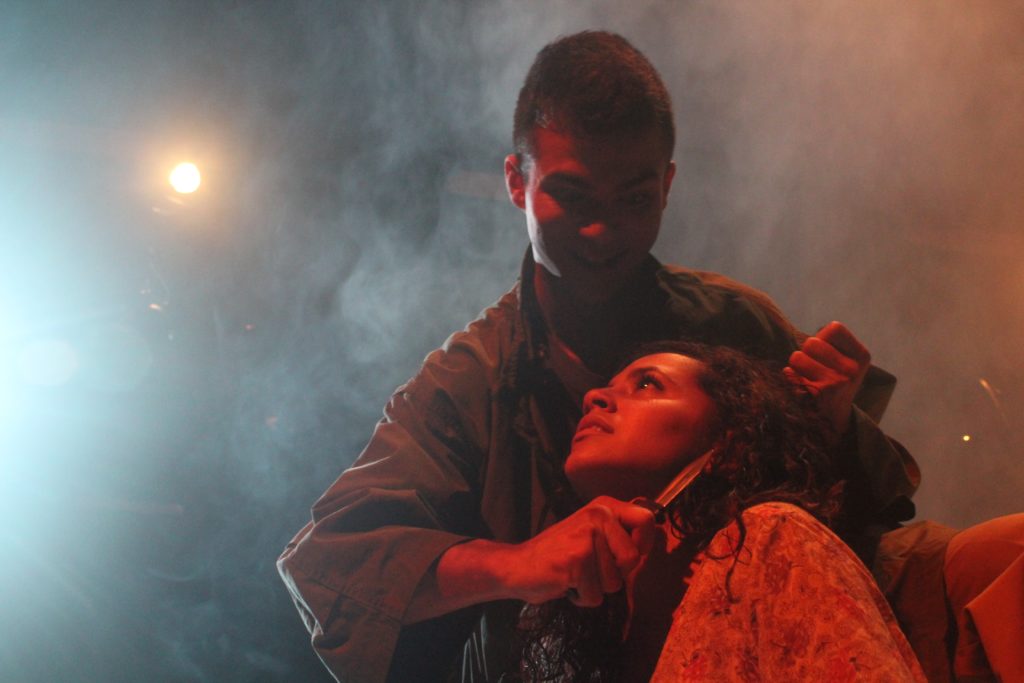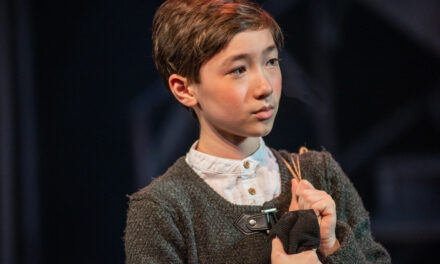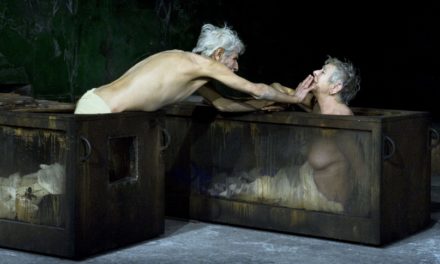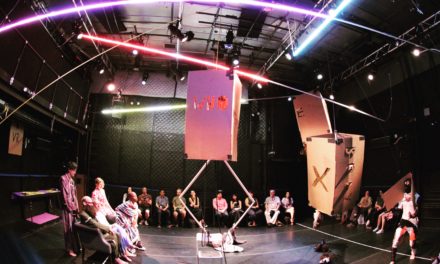“From now on, you answer me ‘yes, sir, or no sir.’ Do you understand?” The actor in the attire of a military officer burst out of the entrance door and screamed to the audience members who were patiently waiting for the show to start in the theatre lobby. Immersive Woyzeck opened just like that—before the audience had even entered the black box there. A tense air permeated the lobby, and the audience members replied, as if they were soldiers in a military boot camp, “Yes, sir.”
Immersive Woyzeck premiered on November 10, 2016, at the Staller Center for the Arts at SUNY Stony Brook. The show was designed to be an interactive performance, set in a military training camp. As director, I aimed to make the audience feel as if they were part of the training soldiers and, at the same time, to let them experience the psychological journey of the protagonist, Woyzeck. This performance underwent a few evolutionary stages during the creative period.
The initial phase of Immersive Woyzeck took place in 2015 at RADA in London, while I was serving as a visiting tutor/director there. It was called The Woyzeck Project at that time. Originally, when I began working with RADA MA students, the idea of the play Woyzeck was not even there at all. I intentionally didn’t pick any text or theme/concept, and I simply conducted experimental exercises repeatedly for a certain period of time. Out of the collection of etude pieces that we created, the image of Woyzeck suddenly emerged. From there, I dissected, deconstructed, then reconstructed Büchner’s text purely based on the physical etudes. The end product became extremely edgy because of the application of this unconventional rehearsal process. At this initial creative stage at RADA, the audience members were located in a set position in the space just like with any conventional show. But since then, I began to wonder whether the most effective way to convey the world of Woyzeck would be an immersive theatre style. Therefore, when I received an offer to direct a show at the Staller Center, I chose the Immersive Woyzeck without hesitation.
Before the opening day, we encountered several hurdles and made several improvements on both the administrative and the artistic/technical sides. It began with the administrative challenge of persuading administrative staff members who were not familiar with the concept of immersive theatre to accept it. The artistic challenges followed, such as identifying the most effective design for our interactive show and training actors to make them most believable to the eyes of the audience who would be standing just a couple of feet away from them. One of the most difficult challenges was figuring out how to enhance the audience’s experience of the performance.
When I began the design concept, I realized that the design for this production should not merely decorate the space. Rather, it should embody the psychological states of the characters and allow the audience to experience the characters’ journey. When our lighting designer proposed the idea of PAR lights suspended above the audience, I pondered as a director “how” to most creatively utilize this design to reflect the characters’ psyches. As a result, I came up with the idea of swinging the suspended lights to visually synchronize Woyzeck’s warping and collapsing mental world. It was a true flowering moment of artistic collaboration between designer’s concept and director’s application of the design. This production consisted of the collaboration of different talents. The set was minimal—only five mobile platforms. Depending on the position of these set pieces, the spatial representation changed in a few seconds: from a tavern into a field, and from a military boot camp into a nightmarish nowhere-land that manifested the psychological state of the protagonist. The sound effects supported the nuance of each scene and emphasized other artistic elements in the show.
The two most important elements of this project were to train actors specifically for the immersive show and to figure out the best way to guide the audience as part of the performance. Unlike most conventional theatre shows, the audience for Immersive Woyzeck stood close to the actors so that they could even catch the actors’ droplets of sweat. Thus, convincing acting was a prerequisite. I applied the same physical etude technique that I used for RADA’s version of Woyzeck in 2015. The etude that began as a pure experiment in 2015 eventually transformed into a training methodology in 2016; this was the intriguing trait of a show that underwent a few evolutionary steps.
Another singular characteristic of Immersive Woyzeck was the audience in an immersive environment. Even though we rehearsed the scenes, imagining the audience around the actors, we could never guess the actual behaviors of the audience each night until the show really opened. To prepare for this situation, we began to open up the stumble-through to invited audience members from the early stages: we had the first test showing without any set/lights/costumes right after we finished the blocking. We set up the feedback session with the audience after the test run, exchanging invaluable advice. We repeated this test-run/feedback process three times before the preview. All audience comments were reflected in the editing/reshaping process. It was a risky and unorthodox approach to show an unfinished stumble-through to the public; however, I believe this was the best decision for Immersive Woyzeck. Through this process, we learned the audience’s behavioral patterns that led us to establish the navigation paths in the show. The production immersed the audience not only in the show itself but also in the creative process of the show.
In today’s technologically fast-paced world, people tend to value a quick result. I intentionally took the opposite path during the creative process of Immersive Woyeck; without setting up the end result, valuing the process itself, and including the audience in the creative process. This unusual creative process became the key to the production’s success.
The Woyzeck Project (2015) evolved into Immersive Woyzeck (2016). Immersive Woyzeck is constantly changing, and this evolution of the production is the unique trait of this show. There may be another life of Immersive Woyzeck in the very near future. How does this show transform in the next phase?
This post was written by the author in their personal capacity.The opinions expressed in this article are the author’s own and do not reflect the view of The Theatre Times, their staff or collaborators.
This post was written by Izumi Ashizawa.
The views expressed here belong to the author and do not necessarily reflect our views and opinions.

